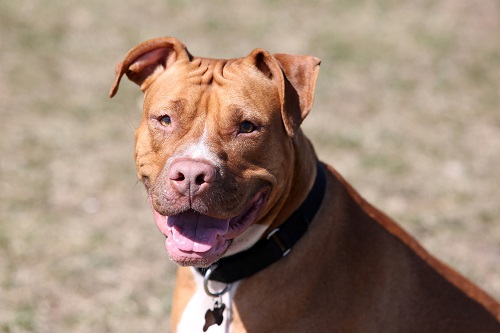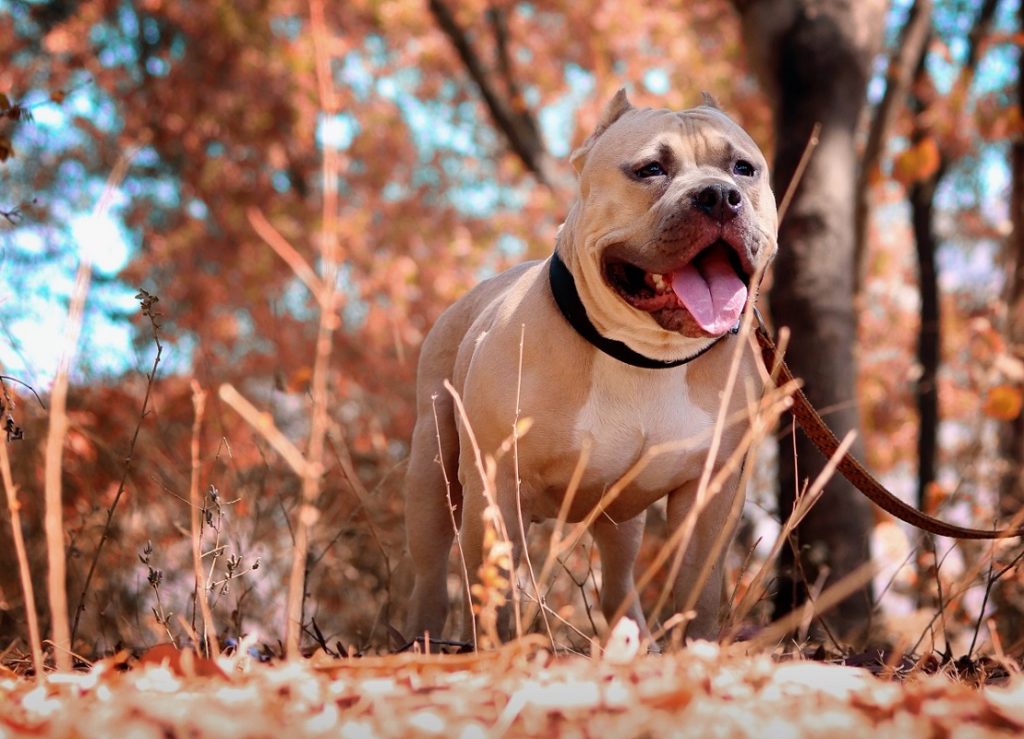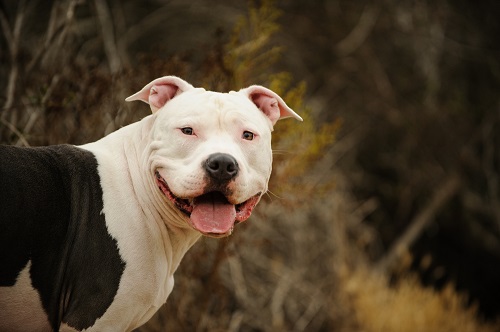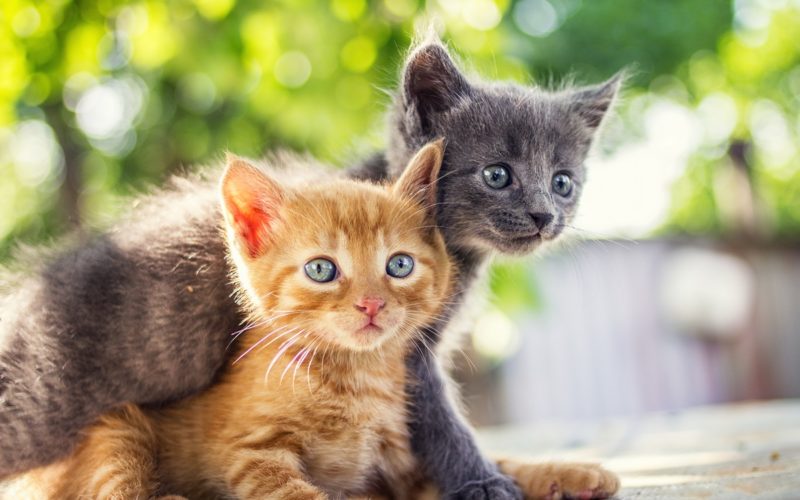While this sweet, intelligent, lovable breed is probably one of the most misunderstood among canines, the truth is that training a Pit Bull – no matter what his age may be – is simply a matter of smart planning. Although there are different techniques for training Pit Bulls at each stage of their life, this late-maturing breed thrives on consistency and patience, so potential and current Pit Bull parents should strive to have both in abundance. This article will explore not only a variety of training techniques, but canine socialization tips, feeding suggestions, and other helpful guidelines for Pit Bull owners.
What’s In A Name?
Human children hear their names often throughout the day – sometimes happily, sometimes dripping with exasperation from a tired parent. They know how to respond when their name is called, but if the dreaded middle name comes out – or even their full name – they might drag their feet a little. They know that “the name” means something is wrong and punishment probably isn’t far behind, and no one wants to run towards punishment. Curiously, even though this effect is easy to observe and change in humans, it often doesn’t occur to Pittie parents.
When a dog’s name is frequently paired with a scolding (“Duke, No!”), he will come to associate his name with “trouble” or “I’m being bad.” He may dip his head, hide his face, or even run away at the sound of his own name if it happens often enough. As a dog’s name is the first thing likely to spring to his owner’s lips when attention or obedience is required, associating attention with his name is a vital part of dog interaction with a Pit Bull. A good training regimen begins with making his name a positive association, and the American Kennel Club has a smart, easy 5-step process for doing just that:
- Step 1: Keep him on a leash or lead – letting him roam free in a yard or dog park will introduce too many distractions to the process. Any length of lead will do, but make sure he has enough room to move his head and pay attention when spoken to.
- Step 2: Let him look at something or get distracted – the key is to rein him in on the sound of his name alone, not by pulling at the lead. If he’s paying attention to something else, the behavior can be originated and rewarded properly. If these “breaks” aren’t taken, he’s essentially only learning he’ll get treats as long as he keeps focused on his handler – not by responding to his name.
- Step 3: Once he’s distracted, say his name with a strong, clear, and happy tone, using a naturally high pitch. The trick is to make his name an event he looks forward to and responds readily to. By using a friendly tone and an easy-to-hear pitch, his natural curiosity is invoked – and that can be used to reinforce the positive behavior.

- Step 4: Select small, soft, easy-to-eat treats and keep them in a pocket or treat pouch during the training. He should receive treats that take more than a few seconds to eat, so no bones or large chewy-style treats. In a pinch, even his kibble-style dog food will work if he’s a fan, but treats are the best option as they’re different and interesting to his palette.
- Step 5: Repeat this behavior as often as possible, and involve each member of the household that will be living with and interacting with the Pit Bull. If a Pittie and his parent will be living alone, visiting friends or family members can help. The goal is to have the pup respond to the action, not the individual. Eventually, when he seems to “get it,” the treats can be swapped out for verbal encouragement, petting, or a good scratch behind the ears.
Even though there should be an emphasis on making his name a neutral or positive trigger, Pit Bull owners can certainly still chastise their dogs when necessary. The difference between a stern “No” or “Down” is very different to canine ears than a “(name), Down!” would be. All types of verbal tools can be useful in a dog training arsenal, but the ultimate goal should always be to achieve results based on a command, rather than the volume of that command.
Preventing Accidents: Pittie Housebreaking 101
The bane of carpeting and hardwood flooring alike, canine accidents are disheartening messes – particularly with larger breeds such as the Pit Bull. Housebreaking (or re-housebreaking, if a pup is in need of a refresher course) takes as much effort from the Pit Bull parent as it does from the dog himself. Keep these important points in mind while housebreaking your puppy or dog:
- A dog cannot use the bathroom: if he’s gotta go, he’s gotta go! Most dogs will generally try to keep their indoor “accidents” as confined to a corner (or as far away from his play/sleeping quarters as possible) out of natural instinct. When doing the “sweep” to check if there have been accidents, start with far corners of the room; he may also try to pull pillows or blankets over feces to cover them.
- “Marking” pee is cause for concern: If he’s peeing a little bit in several areas over a short period of time, there’s likely more going on than a simple bathroom break. He may be nervous or anxious in the absence of his parent(s), or put on alert by the smells, sights, or sounds of a nearby intruder. This trigger might be as benign as the mailman or a squirrel outside, but it’s enough to make your dog mark the inside of the house. Peeing on corners of objects is his way of saying “This is my house! Stay away!” Keep him settled by giving him an old unwashed piece of clothing: being able to snuggle up to his parent’s scent will induce a calming feeling. Swap out the clothing as necessary to keep him comforted and engaged.
- Timing can prevent accidents: Pit Bull owners can control the times their pup needs to go outside by carefully timing feeding intervals. While dogs should have access to fresh, clean water throughout the day for health reasons, meal times can be controlled. In medium to large breeds like the Pit Bull, a dog will generally have to use the bathroom approximately 2 to 3 hours after eating. If wet food is used to supplement dry kibble, this clock may be a bit shorter, as there is less work for the digestion system to do.
- Confining him during absences and overnights may help: Dogs feel safest in a place to call their own, and Pit Bulls will happily cuddle up on a blanket or bed to nap. A large crate will help contain any messes and prevent anxiety-chewing of furniture legs. A crate for a Pit Bull should be large enough to allow him to stand up and turn around, but not overly large: if he feels he can “hide” his accidents away from where he sleeps, he may feel more free to make a mess in his crate.
 Even if a Pit puppy is still young, it’s never too early to start associating bathroom phrases with the desire to go outside. Coordinate with family members, friends, or pet-sitters that will be interacting with the dog, and ensure that everyone is using the same phrase. “Go potty,” is familiar and popular, and easy to guess if a pet sitter isn’t familiar with the bathroom routine. This phrase should be used in the same way the dog’s name is during name training, with the caveat that they should “perform” before a treat is given. Below are some helpful guidelines:
Even if a Pit puppy is still young, it’s never too early to start associating bathroom phrases with the desire to go outside. Coordinate with family members, friends, or pet-sitters that will be interacting with the dog, and ensure that everyone is using the same phrase. “Go potty,” is familiar and popular, and easy to guess if a pet sitter isn’t familiar with the bathroom routine. This phrase should be used in the same way the dog’s name is during name training, with the caveat that they should “perform” before a treat is given. Below are some helpful guidelines:
- Get the dog’s attention and tell him “It’s time to go potty!” in a clear, upbeat voice.
- Take the dog out right away, directly to the area designated area for said potty breaks.
- Be patient and wait until the dog has “done his business.” Even if it’s just a little marking pee on a nearby tree, reward him with a treat and praise him effusively.
- Take the dog out several times throughout the day during the training period, until accidents in the house stop completely.
- Repeat the phrase in less familiar locations, such as out on a walk, so he will understand that the phrase indicates the action of eliminating, not the area of the yard he does his business in.
Repetition, familiarity, encouragement, and treats will help him understand that the “go potty” phrase means to eliminate – and the place to eliminate is outside where his pet parent leads him. This will become a very handy trick to use while travelling with the Pit Bull, as it reinforces a comforting routine while letting him know when and where to eliminate in an unfamiliar place.
Pit Bulls & Socialization
While the breed is victim to a lot of unflattering myths and false rumors about aggression, there’s one undeniable fact about Pit Bulls: they are strong. Their sturdy stance and dense musculature means that even innocent play can feel more like roughhousing to another dog, and excitement can sometimes lead to accidental injuries. Follow these useful pet-parenting tips to ensure safe socialization for dogs and people alike:
- Don’t leave any dogs alone with other pets or children; dogs should always be supervised: Pit Bulls are not any more aggressive than the next dog breed, but their build, size, and weight makes them more likely to knock over or pin smaller animals and children. To them, it may be just energetic play, but to something smaller and weaker, it can be frightening or painful. Therefore, it’s key for pet owners to supervise larger pooches of all breeds, especially when their dog is socializing with other dogs or small children.
- Don’t introduce a dog into an unfamiliar, uncontrolled environment without structure: While it may be tempting to let him loose in a dog park to figure it out for himself, there’s a good chance there might be a canine personality clash. A strong, energetic dog like a Pit Bull relies upon the structure, guidance, and boundary-setting of his parent(s) when entering an unfamiliar environment. That means keeping him on a lead and controlling his introduction to new scents, sights, and sounds, as well as potential canine or human pals.
- Don’t take chances with potential toy or food aggression: A domesticated dog of any breed is still descended from wolves, which means that there’s a better-than-average chance he’ll get protective about his food or favorite toys. Normalize touch during eating (provided it’s safe) by keeping a hand on him or actively petting and talking to him while he’s eating. He should understand that eating isn’t necessarily a solitary activity, and that it’s normal to be approached or touched while eating. This will combat potential food aggression, particularly if this training is established from puppyhood. Note: Never withhold normal amounts of food as a form of punishment or control; doing so will ramp up food aggression in any breed of dog.
Pit Bulls & Restraints
With broad chests, thick necks, strong legs, and hindquarters that would give a weightlifter a run for his money, Pit Bulls aren’t the average dog. While originally bred for fighting other animals competitively in a pit (hence their name), Pit Bulls have grown to become a beloved, affectionate, loyal family breed of dog. That said, their body shape and musculature remain well after their fighting ancestry, which leaves pet parents with a challenge when it comes to restraint.
Even with their thick necks, “Pitties” are notorious collar-slippers. These happy-eyed escape artists will twist, duck, and pull their way out of traditional collars and leads if they’re determined to. While some choke-style collars feature inward-facing spikes to deter this pulling behavior, a more humane option is called a martingale collar. This style works particularly well with Pit Bulls, as it tightens if they lean forward, but won’t get caught in a dangerous or painful “tight” position: it relaxes as the dog wearing it relaxes. This collar style reinforces good behavior and helps pet parents teach their pup to walk slowly and “heel” while out on a stroll.
Pit Bulls may also benefit from harnesses, as these give their parent(s) a sturdy place to grip or attach a lead and can’t be slipped the way a collar can. If outfitting a Pit Bull in a harness, however, parents should keep a watchful eye the determined pup can’t reach or chew at any of the straps. Provided a dog is comfortable with his harness, he can wear it throughout the day, though it should be removed before bedtime to allow him to relax.
Summary: Be Patient When Training Your Beloved Pit
When it comes to training a Pit Bull effectively, it is not unlike teaching a small child – through trial and error, patience, and repetition, pet parents can make formidable progress by following the aforementioned guidelines. Oftentimes, the trick to training a Pit Bull is to simply wait him out (or out-stubborn him): remember, he’s looking to his pet parent for boundaries and guidance. Staying consistent and predictable is the best way to instill good behavior in this sweet, sensitive but often misunderstood breed – and the rewards will be all the adoration their beautifully soulful canine eyes can muster.
Sources Cited:
- “How To Train A Pit Bull.” PetCareRx.com, (publish date year unavailable), https://www.petcarerx.com/article/how-to-train-a-pit-bull/735. Accessed September 22, 2019.
- By Minette. “Pit Bull Training – 9 Tips for Success.” The Dog Training Secret.com, (no publish date), https://thedogtrainingsecret.com/blog/top-9-tips-training-pit-bull/. Accessed September 22, 2019.
- “How to Train a Pit Bull Puppy to Listen.” Wag! (Wag Walking.com), (no publish date), https://wagwalking.com/training/train-a-pitbull-puppy-to-listen. Accessed September 22, 2019.
- Leigh, Penny. “The Name Game – Make Sure Your Dog Loves His Name.” AKC.org (American Kennel Club), March 17, 2017, https://www.akc.org/expert-advice/training/dog-name-game/. Accessed September 22, 2019.





